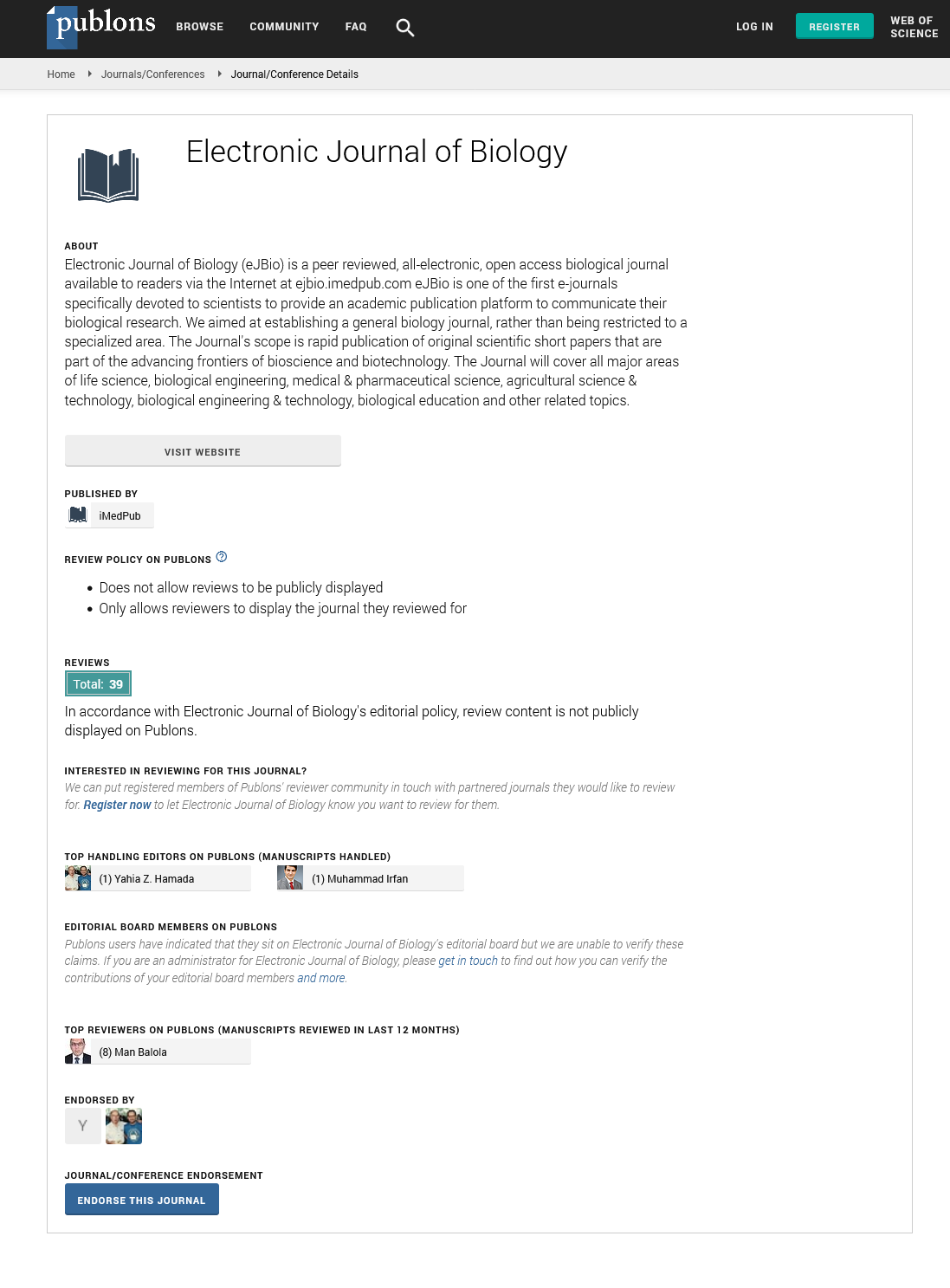Abstract
Medicinal Uses and Molecular Identification of Two Momordica charantia Varieties ÃÆâÃâââ¬Ãâââ¬Å a review
Momordica charantia is a tendril bearing medicinally important vine. Medicinal properties of the plant include antimicrobial, antihelminthic, anticancerous, antimutagenic, antitumourous, abortifacient, antifertility, antidiabetic. Amongst the various medicinal properties, antidiabetic property of M. charantia is of utmost importance to human beings and animals. Mixture of steroidal saponins known as charantins, insulin-like peptides and alkaloids are the hypoglycemic constituents of M. charantia and these constituents are concentrated in fruits of Momordica charantia. Momordica charantia can be considered as an alternative therapy for lowering blood glucose levels in patients with diabetes. Although Momordica charantia has hypoglycemic effects, but available scientific data is not sufficient to recommend its use for treating diabetes, in the absence of careful supervision and monitoring. Investigation of the traditional uses of Momordica charantia in India revealed that it is one of the most important plant for ethnobotanical practices. Ethnobotanical uses of this plant in India suggest that it is capable of lowering blood glucose level in diabetic patients. Furthermore, RAPD markers have been used to analyze the genetic diversity among 12 different accessions of M. charantia, collected from different districts of West Bengal. The clustering pattern based on RAPD markers was not in accordance with the grouping based on morphological characters. The presence of SCAR markers in the two varieties of M. charantia namely var. muricata and var. charantia has been determined so that nutritional and medicinal properties could be exploited judiciously.
Author(s):
Ananya Paul, Sarmistha Sen Raychaudhuri
Abstract | Full-Text | PDF
Share this

Google scholar citation report
Citations : 5001
Electronic Journal of Biology received 5001 citations as per google scholar report
Electronic Journal of Biology peer review process verified at publons
Abstracted/Indexed in
- Google Scholar
- China National Knowledge Infrastructure (CNKI)
- CiteFactor
- Electronic Journals Library
- Zoological Records
- WorldCat
- Proquest Summons
- Publons
- MIAR
- Openaccessarticles.com
- Secret Search Engine Labs
Open Access Journals
- Aquaculture & Veterinary Science
- Chemistry & Chemical Sciences
- Clinical Sciences
- Engineering
- General Science
- Genetics & Molecular Biology
- Health Care & Nursing
- Immunology & Microbiology
- Materials Science
- Mathematics & Physics
- Medical Sciences
- Neurology & Psychiatry
- Oncology & Cancer Science
- Pharmaceutical Sciences


